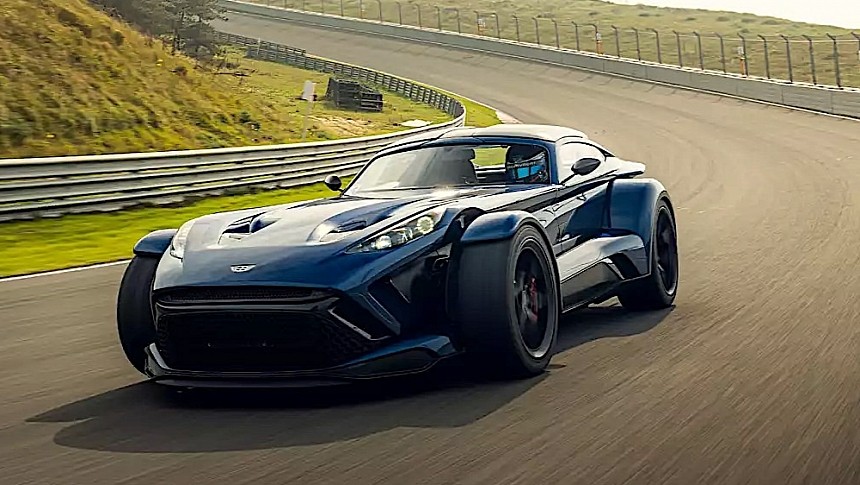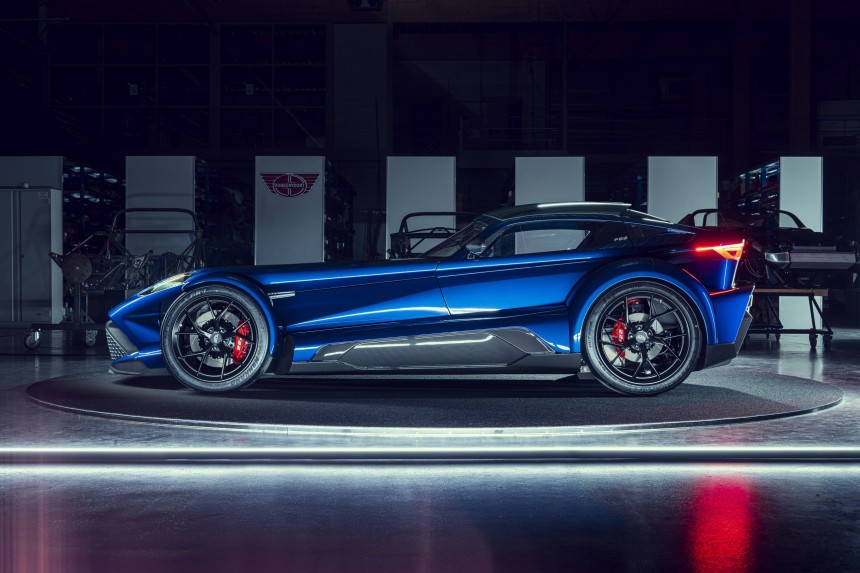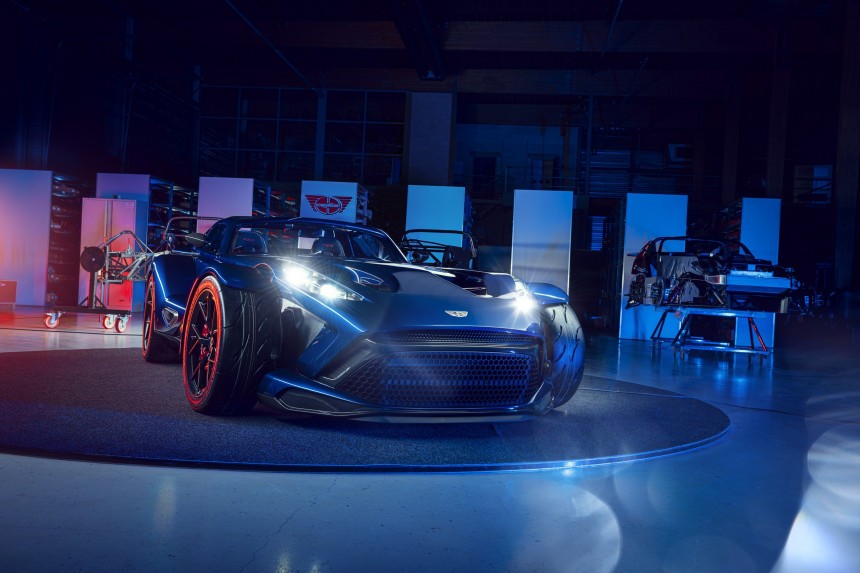Technically speaking a fighter jet can pull as many Gs as the human body can handle. For the average Joes with no specialized training in flying these beasts, that would be about five Gs. Fighter pilots, on the other hand, aided by training and special suits, can withstand up to nine Gs. What does that mean? In simple words, it pretty much means a pilot ends up weighing nine times their normal weight for a few seconds, and it's all pressing down on their body.
Nine Gs is also about as much as most of the world's fighter jets can take, including the mighty F-22. Beyond that, the plane's frame is probably subjected to too much stress for the pilots' peace of mind. Some say the plane can reach as much as 15 Gs, but the reality is, given how nobody really put the plane beyond that limit, at least to our knowledge, no one really knows.
I brought up the F-22 and the G talk because, someone fittingly, a sports car named just like the aircraft managed to beat the world record for lateral acceleration when it comes to production cars. Or at least that's what its maker says.
If you remember, exactly one year ago, a Dutch carmaker going by the name Donkervoort released into the world, in production form, something called the F22. A sports car true and true, but reaching for the supercar realm, the two-seater is a real nimble beast, even judging by its specs alone.
With a carbon fiber body shaped like it was bred to race pulled over a steel tube spaceframe, the car is capable of tipping the scales at just 750 kg (1,653 pounds). That's very impressive, and it even makes the car the lightest road-legal two-seat supercar on the planet.
Add to that the fact the F22 is powered by a five-cylinder engine with impressive numbers and sourced from German carmaker Audi. It's a turbocharged piece of engineering that can deliver 500 horsepower and 640 Nm of torque, meaning that the thing is capable of putting out a devilish troop of 666 hp per ton.
Those are respectable specs, to say the least, and that is understandable for a car that is said to sell for around $270,000. The Dutch carmaker planned to produce the F22, its first car after the company's reigns were taken over by Denis Donkervoort in 2021, in a limited run of just 50 units, but the enthusiasm with which it was received prompted the doubling of the planned output to 100 units, to be sold not only in Europe, but also in the U.S. and the Middle East.
So, by all accounts, a very successful car, one that more than deserved its one-year anniversary to be properly celebrated. So Denis Donkervoort himself decided to take an F22 out for a spin on the Zandvoort track, the place where the Dutch GP Formula 1 race is usually happening, to shoot a sort of anniversary video.
The man and his team did just that, and you can enjoy the entire adventure in the clip attached below this text. But before you head on over to take a look, we'll tell you that it was during the shooting of the video, and somewhat unexpectedly (or so they say), that the F22 broke the record for lateral acceleration.
Now, Donkervoort doesn't say anything about the new number being properly recorded and validated by some record overseeing body, but it should know it's higher than the previous one, because it too was set by a Donkervoort machine.
On paper, the F22 can take as much as 2.15 G of lateral acceleration, but during the run this week instruments recorded 2.3 times the force of gravity pushing on the car during cornering. That's significantly higher than the previous record of 2.1 Gs set by a Donkervoort D8 GTO-JD70. At the time, that beast was hailed as the first "supercar to cross the 2G cornering threshold."
The F22 car used for this run was not modified in any way and it was using Nankang tires that were on their first outing on the track. The achievement was made possible, not in small part, thanks to the fact the vehicle comes with double the torsional and bending rigidity of its predecessor, the D8 GTO Individual Series.
Aiding the ultra-stiff core chassis properly doing its thing is an active shock absorber system that can be used to increase or decrease the car's distance from the road beneath it by as much as 35 mm.
No matter if the new record is properly noted by someone with the power to do so or not, the F22's achievement remains one for the history books. And you can enjoy how it all happened in the rather short, 3-minute clip available below.
I brought up the F-22 and the G talk because, someone fittingly, a sports car named just like the aircraft managed to beat the world record for lateral acceleration when it comes to production cars. Or at least that's what its maker says.
If you remember, exactly one year ago, a Dutch carmaker going by the name Donkervoort released into the world, in production form, something called the F22. A sports car true and true, but reaching for the supercar realm, the two-seater is a real nimble beast, even judging by its specs alone.
With a carbon fiber body shaped like it was bred to race pulled over a steel tube spaceframe, the car is capable of tipping the scales at just 750 kg (1,653 pounds). That's very impressive, and it even makes the car the lightest road-legal two-seat supercar on the planet.
Add to that the fact the F22 is powered by a five-cylinder engine with impressive numbers and sourced from German carmaker Audi. It's a turbocharged piece of engineering that can deliver 500 horsepower and 640 Nm of torque, meaning that the thing is capable of putting out a devilish troop of 666 hp per ton.
So, by all accounts, a very successful car, one that more than deserved its one-year anniversary to be properly celebrated. So Denis Donkervoort himself decided to take an F22 out for a spin on the Zandvoort track, the place where the Dutch GP Formula 1 race is usually happening, to shoot a sort of anniversary video.
The man and his team did just that, and you can enjoy the entire adventure in the clip attached below this text. But before you head on over to take a look, we'll tell you that it was during the shooting of the video, and somewhat unexpectedly (or so they say), that the F22 broke the record for lateral acceleration.
Now, Donkervoort doesn't say anything about the new number being properly recorded and validated by some record overseeing body, but it should know it's higher than the previous one, because it too was set by a Donkervoort machine.
On paper, the F22 can take as much as 2.15 G of lateral acceleration, but during the run this week instruments recorded 2.3 times the force of gravity pushing on the car during cornering. That's significantly higher than the previous record of 2.1 Gs set by a Donkervoort D8 GTO-JD70. At the time, that beast was hailed as the first "supercar to cross the 2G cornering threshold."
Aiding the ultra-stiff core chassis properly doing its thing is an active shock absorber system that can be used to increase or decrease the car's distance from the road beneath it by as much as 35 mm.
No matter if the new record is properly noted by someone with the power to do so or not, the F22's achievement remains one for the history books. And you can enjoy how it all happened in the rather short, 3-minute clip available below.






























